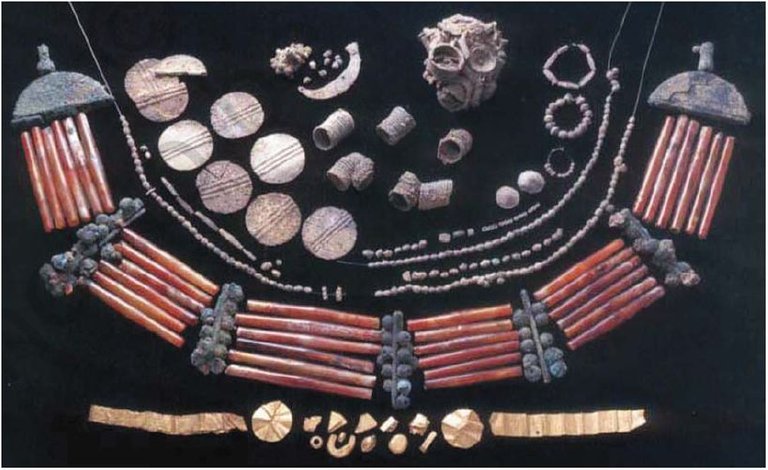The Harappan men and women decorated themselves with large variety of ornaments produced from every conceivable material ranging from precious metals and gemstones to bone and baked clay. While necklaces, fillets,armlets and finger-rings were commonly worn by both sexes, women wore girdles, earrings and anklets. Hoards
of jewellery found at Mohenjodaro and Lothal include necklaces of gold and semi-precious stones, copperbracelets and beads, gold earrings and head ornaments,
faience pendants and buttons, and beads of steatite and gemstones. All ornaments are well crafted. It may be notedthat a cemetery has been found at Farmana in Haryana where dead bodies were buried with ornaments.The bead industry seems to have been well developedas evident from the factories discovered at Chanhudaro
and Lothal. Beads were made of cornelian, amethyst,jasper, crystal, quartz, steatite, turquoise, lapis lazuli, etc.Metals like copper, bronze and gold, and shell, faience and
terracotta or burnt clay were also used for manufacturing beads. The beads are in varying shapes—disc-shaped,cylindrical, spherical, barrel-shaped, and segmented. Some beads were made of two or more stones cemented together,some of stone with gold covers. Some were decorated by incising or painting and some had designs etched onto them. Great technical skill has been displayed in the manufacture of these beads.
Sort: Trending
